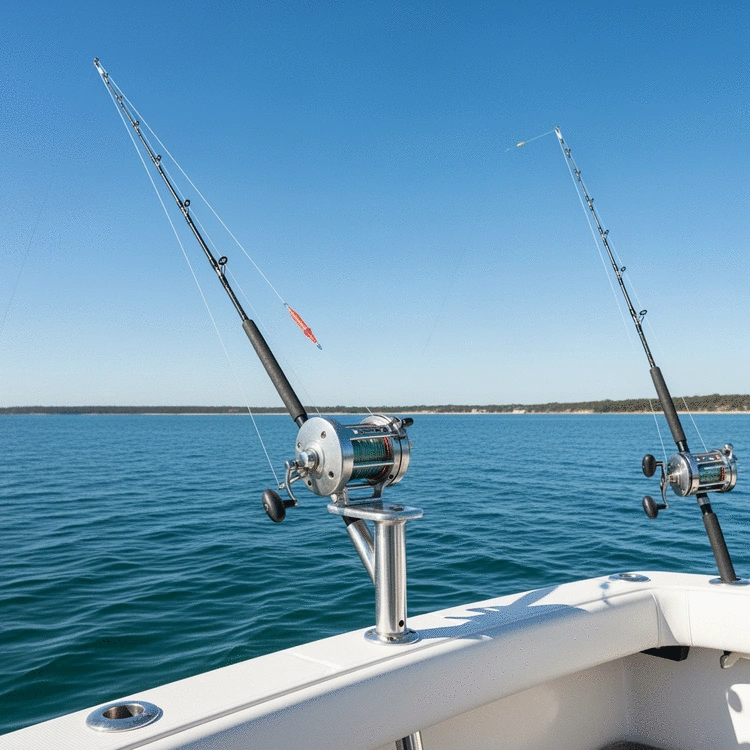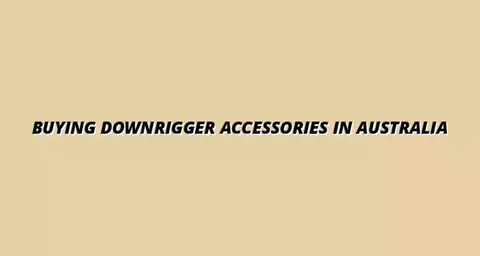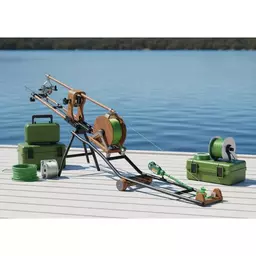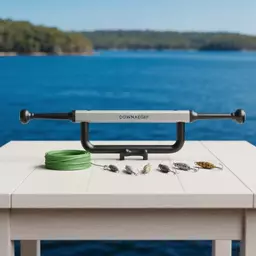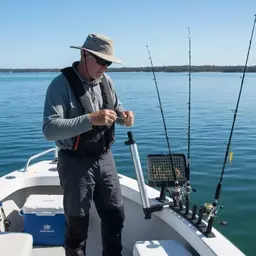As you dive into the world of fishing along the Australian coast, consider this: downriggers can drastically enhance your fishing success by allowing you to target fish at precise depths. Are you ready to elevate your angling game?
What You Will Learn
- Downriggers provide depth control, allowing precise bait placement for various fish species.
- Using downriggers can lead to increased catch rates by improving hook-up ratios.
- Understanding species behavior is crucial for targeting kingfish and tuna effectively.
- Routine maintenance such as rinsing with fresh water can prolong the lifespan of your downrigger.
Key Aspects of Downrigger Usage and Maintenance
Downriggers significantly enhance fishing success by offering depth control and adaptability. Below is a visual summary of their benefits and essential maintenance practices. For more detailed insights into making the most of your downrigger, check out our guide on enhancing downrigger success for anglers.
Benefits of Downrigging
- • Depth Control: Target fish at optimal depths.
- • Increased Catch Rates: More precise lure presentation.
- • Versatility: Adaptable for various fishing styles.
- • Reduced Line Tension: Smoother operation, fewer tangles.
Downrigger Maintenance Flow
Rinse with Fresh Water
Inspect Components
Lubricate Moving Parts
Store Properly
Understanding the Role of Downriggers in Australian Coastal Fishing
As a passionate fishing enthusiast, I can tell you that downriggers are a game changer when it comes to fishing along the stunning Australian coast. They allow us to precisely control the depth at which our bait or lure is presented, making it easier to target those elusive fish. Downrigging isn’t just a technique; it’s a strategy that enhances our chances of success out on the water!
But what exactly are downriggers? In simple terms, they are devices that help you *troll bait or lures at specific depths*. They work by using a heavy weight that pulls the fishing line down deep into the water, where fish like to hang out. This precision is what makes downriggers essential for effective fishing, especially when targeting species that prefer cooler, deeper waters.
The Basics of Downrigging: What You Need to Know
Overview of Downrigger Functionality and Benefits
Using a downrigger has numerous benefits that can significantly improve your fishing experience. Here’s a quick list of the top advantages:
- Depth Control: Easily set your bait at the optimal depth for various species.
- Increased Catch Rates: More precise presentations lead to better hook-up ratios.
- Versatility: Suitable for a variety of fishing styles, from trolling to drift fishing.
- Reduced Line Tension: Helps prevent tangles and allows for smoother operation when reeling in.
Every angler knows that finding fish is about *adapting to their environment*. With a downrigger, you can quickly adjust your depth based on factors like water temperature and fish behavior, making your fishing endeavors more productive. For guidance on choosing the right equipment, explore our article on selecting downriggers for Aussie waters.
Importance of Using Downriggers for Targeting Australian Species
When it comes to fishing in Australian waters, certain species thrive at specific depths. For instance, kingfish and tuna are often found in cooler, deeper water, and using a downrigger gives you the edge to reach them with your bait. By targeting these depths effectively, you can significantly increase your chances of landing that trophy catch!
Moreover, understanding the behavior of these fish species is crucial. They tend to migrate and adapt based on seasonal changes, so adjusting your downrigger setup is key. *It’s all about strategy*—knowing where to position your bait is just as important as the bait itself!
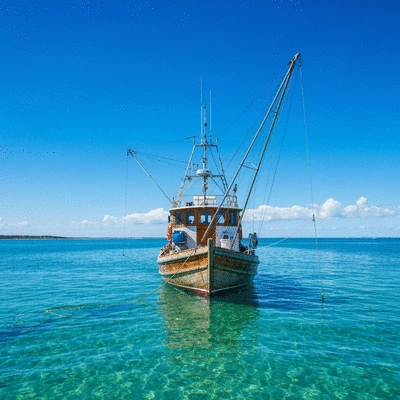
Exploring Common Fish Species in Australian Coastal Waters
Key Characteristics of Popular Species: Kingfish, Tuna, and More
Australia boasts a rich variety of fish species that are sure to excite any angler. Here are a few key species you should consider targeting:
- Kingfish: Known for their strength and speed, often found around reefs and rocky outcrops.
- Tuna: Fast swimmers that prefer cooler water; they can be quite the catch on a downrigger.
- Snapper: A popular target for many anglers, generally found in shallower waters.
- Mahi-Mahi: Tropical fish that are colorful and fun to catch, often found near floating debris.
Each of these species presents unique challenges and rewards. By adapting your downrigging techniques to fit the characteristics of these fish, you can enhance your overall fishing experience. Remember, the ocean is full of surprises, and understanding your target species is the first step toward a successful catch!
Interactive Poll: Your Downrigging Experience
As we dive deeper into the world of downriggers, we’d love to hear from you! What aspect of downrigging do you find most challenging or rewarding? Share your thoughts below:
Maintaining Your Downrigger for Longevity and Performance
As a dedicated angler, I understand the importance of keeping your equipment in top shape. Regular maintenance of your downrigger ensures that you can make the most out of each fishing trip, particularly in the challenging conditions of Australian coastal waters. Here’s how to keep your gear ready for action!

Routine Maintenance Practices for Saltwater Use
Saltwater can be tough on fishing equipment, and your downrigger is no exception. To extend its lifespan, I recommend a few simple yet effective maintenance practices:
- Rinse with Fresh Water: After every trip, especially in saltwater, rinse your downrigger with fresh water to remove salt and debris.
- Inspect Components: Regularly check for any signs of wear or corrosion on the cables, weights, and connections.
- Lubrication: Apply a light marine-grade lubricant to moving parts to ensure smooth operation.
- Storage: Store your downrigger in a dry, cool place, and consider using a protective cover to shield it from dust and moisture.
By following these practices, you’ll keep your downrigger functioning optimally and ready for your next fishing adventure! For comprehensive guidance on upkeep, refer to our article on downrigger care and troubleshooting tips.
Cleaning and Storing Your Downrigger Safely
Cleaning and proper storage are crucial steps in maintaining your downrigger. Here’s a quick guide:
- Disassemble: Take apart your downrigger according to the manufacturer’s instructions.
- Wash Thoroughly: Use warm, soapy water to scrub all components, focusing on any areas with salt buildup.
- Dry Completely: Make sure everything is dry before reassembling, as moisture can lead to rust and corrosion.
- Store Securely: When storing, keep your downrigger in a protective case or bag to prevent damage.
Taking these steps will not only enhance the performance of your downrigger but also help you avoid costly repairs down the line!
Troubleshooting Common Issues with Downriggers
Even with the best maintenance, issues can still arise with your downrigger. Here are some common problems and how to troubleshoot them:
- Line Tangles: This is often caused by improper tension or a knot in the line. Regularly check your setup to avoid this annoyance.
- Weight Drop Issues: If your weight isn't dropping correctly, ensure the release clip is functioning properly and that the line isn’t kinked.
- Electrical Problems (for Electric Downriggers): If the motor isn’t running, check your battery connections and ensure they’re clean and secure.
By identifying and addressing these issues early, you can ensure a smoother fishing experience on the water. Remember, every time you hit the waves with your downrigger, you're not just fishing—you're creating lasting memories!
Identifying Problems and Effective Solutions
Being proactive about potential issues can save you a lot of headaches. Here’s a quick rundown of how to identify and solve common problems with your downrigger:
- Check for Corrosion: If you notice any corrosion, clean it immediately with a rust remover designed for marine equipment.
- Monitor Performance: If your downrigger isn't performing as expected, examine all components for wear and tear.
- Consult Manuals: Always refer to the manufacturer’s manual for specific troubleshooting tips and maintenance guidelines.
Taking these steps can enhance not just the longevity of your downrigger, but your overall fishing experience as well. By staying informed and proactive, you can enjoy the thrill of downrigging without the stress of unexpected equipment failure! For additional assistance with common problems, read our common downrigger troubleshooting tips.
Frequently Asked Questions About Downriggers
Q: What is the primary benefit of using a downrigger?
A: The primary benefit of using a downrigger is precise depth control, allowing anglers to position bait or lures at the exact depth where target fish species are located.
Q: Which Australian fish species are best targeted with downriggers?
A: Downriggers are highly effective for targeting species like Kingfish and Tuna, which often inhabit cooler, deeper waters along the Australian coast. They can also be used for Snapper and Mahi-Mahi depending on their depth preferences.
Q: How often should I perform maintenance on my downrigger?
A: Routine maintenance should be performed after every fishing trip, especially in saltwater. This includes rinsing with fresh water, inspecting components, and lubricating moving parts.
Q: What are common issues with downriggers and how can they be resolved?
A: Common issues include line tangles (often due to improper tension), weight drop issues (check release clip and line condition), and electrical problems for electric models (verify battery connections). Regular inspection and consulting the manufacturer's manual can help resolve these.
Q: Does proper storage affect a downrigger's performance?
A: Yes, proper storage is crucial. Storing your downrigger in a dry, cool place, preferably in a protective case or bag, prevents damage, rust, and corrosion, thereby extending its lifespan and maintaining optimal performance.
Recap of Key Points
Here is a quick recap of the important points discussed in the article:
- Depth Control: Downriggers allow anglers to set bait at optimal depths for various fish species.
- Increased Catch Rates: Precise presentations lead to better hook-up ratios and more successful fishing trips.
- Routine Maintenance: Regularly rinse, inspect, and lubricate your downrigger to ensure longevity and performance.
- Species Targeting: Understanding fish behavior and adapting your downrigger setup is crucial for success in Australian waters.
- Troubleshooting: Be proactive by checking for common issues like line tangles and corrosion to maintain optimal performance.
